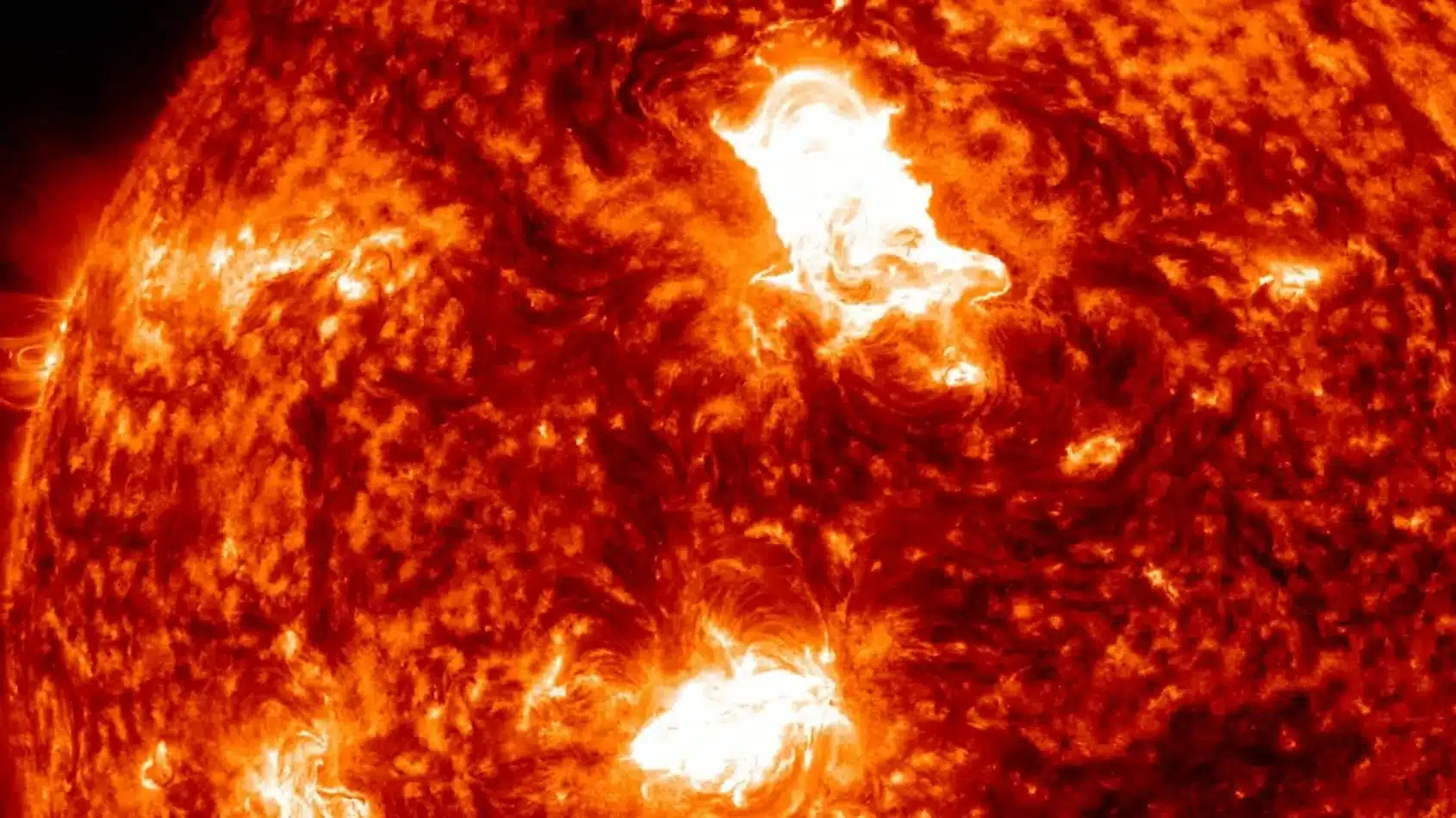What are Solar Flares?
- A solar flare is an intense burst of radiation coming from the release of magnetic energy associated with sunspots.
- Flares are our solar system’s largest explosive events.
- They are seen as bright areas on the sun, and they can last from minutes to hours.
- In a matter of just a few minutes, they heat the material to many millions of degrees and produce a burst of radiation across the electromagnetic spectrum, including from radio waves to x-rays and gamma rays.
- Although solar flares can be visible in white light, they are often more readily noticed via their bright X-ray and ultraviolet emissions.
- Effect of Solar Flare on Earth:
- The intense radiation emitted during a solar flare can affect satellite communications, disrupt radio signals, and even pose a risk to astronauts in space.
- Additionally, the increased solar radiation can lead to geomagnetic storms, which may impact power grids and cause auroras (northern and southern lights) at lower latitudes.
About Sympathetic Solar Flare
- This type of solar outburst occurs when sunspots or filaments are invisibly linked by massive magnetic field loops that arch above the solar surface. When one flare detonates, the others follow in rapid succession.
- Sympathetic solar flares typically involve just two linked flares, ranging in intensity from minor outbursts to X-class flares, the most powerful class of solar flares.
- They are more likely to happen during or around the solar maximum, the most active phase of the Sun’s approximately 11-year solar cycle.
Q1: What are Geomagnetic Storms?
A geomagnetic storm is a major disturbance of Earth’s magnetosphere. These storms result from variations in the solar wind that produces significant changes in the currents, plasmas, and fields in Earth’s magnetosphere. The solar wind conditions that are effective for creating geomagnetic storms are sustained (for several hours) periods of the high-speed solar wind and a southward-directed solar wind magnetic field (opposite the direction of Earth’s field) at the dayside of the magnetosphere.
Source: Sun witnesses a massive explosion on April 23: How it will impact Earth
Last updated on November, 2025
→ Check out the latest UPSC Syllabus 2026 here.
→ Join Vajiram & Ravi’s Interview Guidance Programme for expert help to crack your final UPSC stage.
→ UPSC Mains Result 2025 is now out.
→ UPSC Notification 2026 is scheduled to be released on January 14, 2026.
→ UPSC Calendar 2026 is released on 15th May, 2025.
→ The UPSC Vacancy 2025 were released 1129, out of which 979 were for UPSC CSE and remaining 150 are for UPSC IFoS.
→ UPSC Prelims 2026 will be conducted on 24th May, 2026 & UPSC Mains 2026 will be conducted on 21st August 2026.
→ The UPSC Selection Process is of 3 stages-Prelims, Mains and Interview.
→ UPSC Result 2024 is released with latest UPSC Marksheet 2024. Check Now!
→ UPSC Prelims Result 2025 is out now for the CSE held on 25 May 2025.
→ UPSC Toppers List 2024 is released now. Shakti Dubey is UPSC AIR 1 2024 Topper.
→ UPSC Prelims Question Paper 2025 and Unofficial Prelims Answer Key 2025 are available now.
→ UPSC Mains Question Paper 2025 is out for Essay, GS 1, 2, 3 & GS 4.
→ UPSC Mains Indian Language Question Paper 2025 is now out.
→ UPSC Mains Optional Question Paper 2025 is now out.
→ Also check Best IAS Coaching in Delhi

















